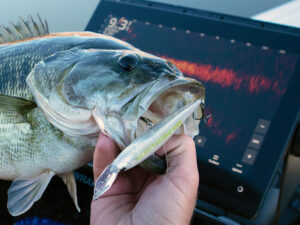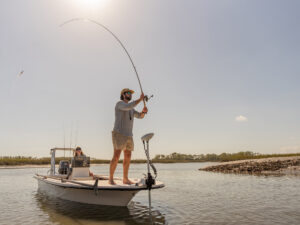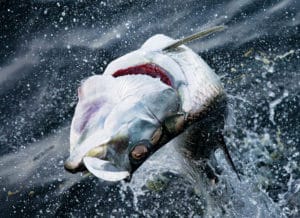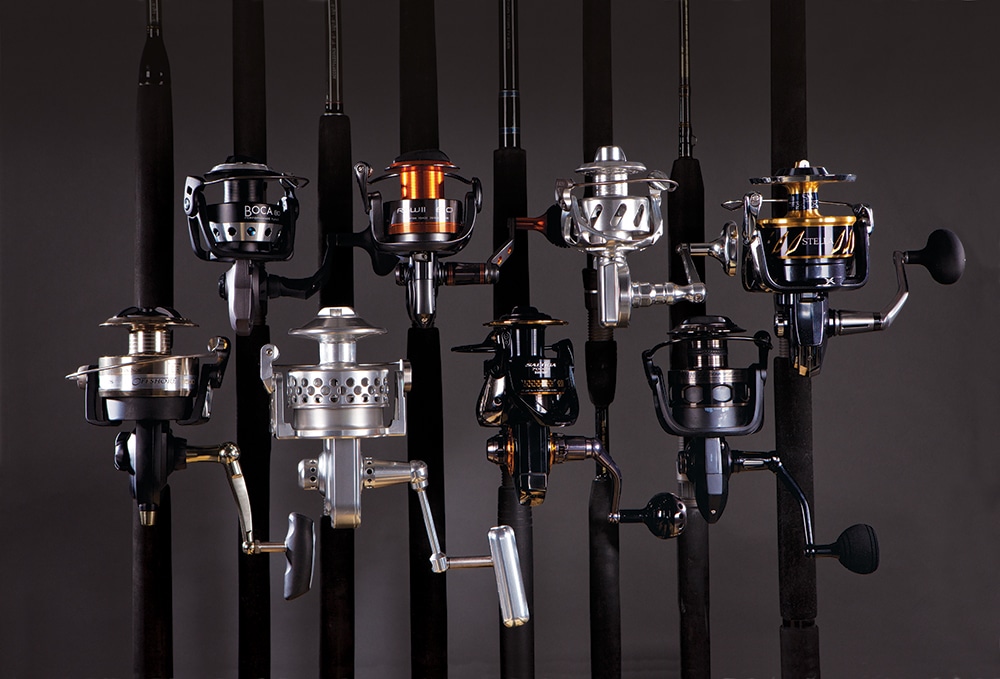
The monster amberjack thumped my metal jig and headed straight for the wreck, testing both my drag and knot-tying skills. It was time to put the hammer down, since I was seconds away from breaking off. I maxed out the drag and put an inspiring arc into my spinning rod, daring the AJ to continue its power dive. Who would win this battle, tackle or tail?
The zinging of the reel stopped enough for me to pump a few short cranks and pull the reef donkey’s head away from the structure. Slowly, I regained some line and some confidence. I was still in for a lengthy fight, but my offshore spinner had won the encounter.
There’s nothing like using saltwater spinning reels in situations once reserved for conventional tackle. With drag settings regularly topping 40 and 50 pounds, and line capacities of 80-pound braid surpassing 500 yards, there’s no question that saltwater spinning reels are up to the big-game task. More and more, these reels are winning battles when up against species like wahoo, amberjack, dolphin, tarpon, snapper, grouper, sailfish, tuna, and in some cases, even marlin.
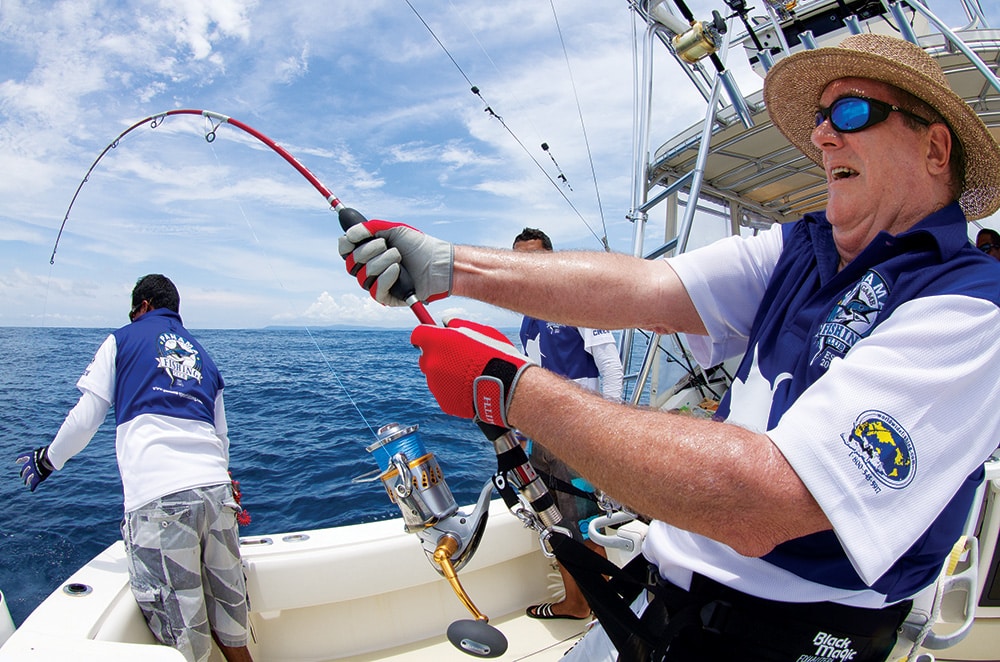
Here are 20 offshore spinning reels that can handle most fish species you’re likely to hook, sans the occasional world-record bluefin or monster mako shark. Offshore spinning reels offer a range of features; your choices might depend on whether you’re jigging offshore, free-lining live baits along the reef, slow-trolling the rips, fishing the surf for stripers, or throwing poppers. No matter your style of fishing, there’s probably a spinner for you.
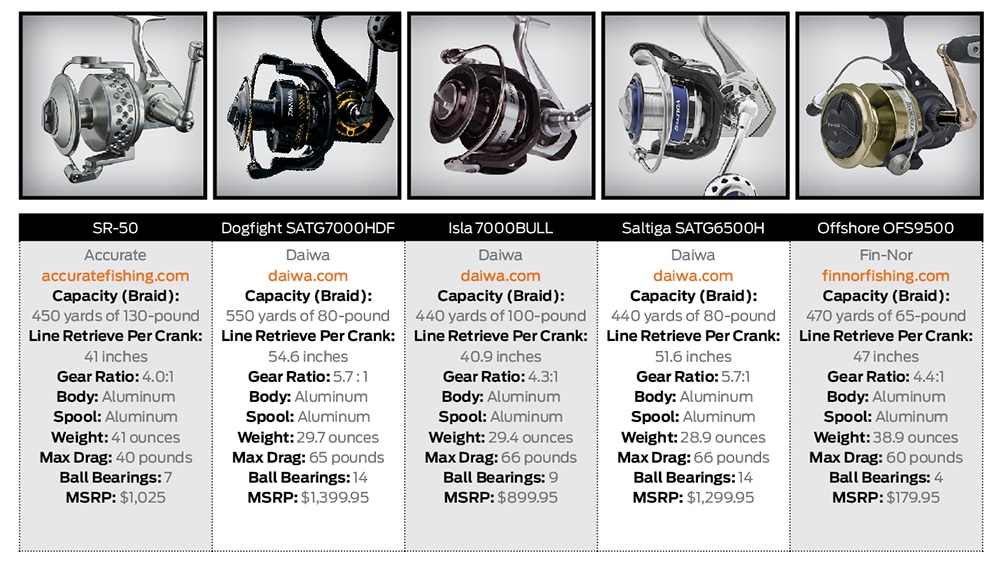
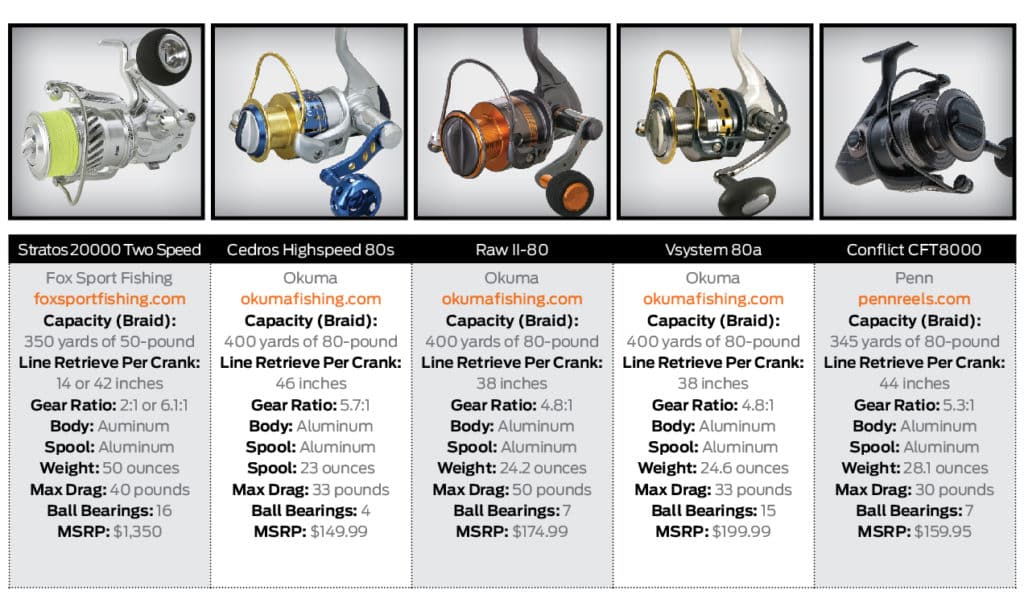
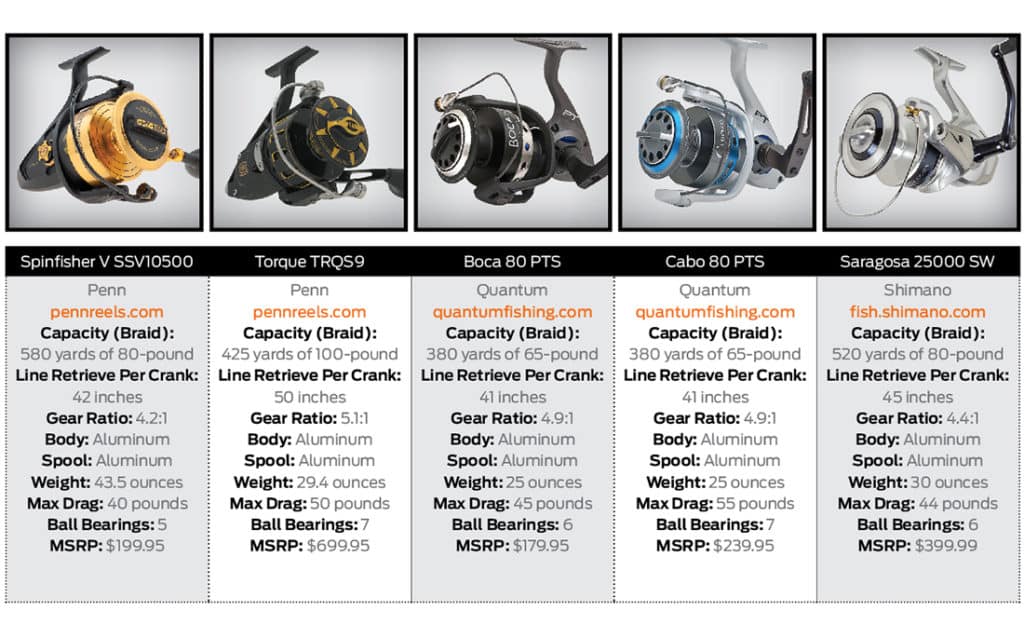
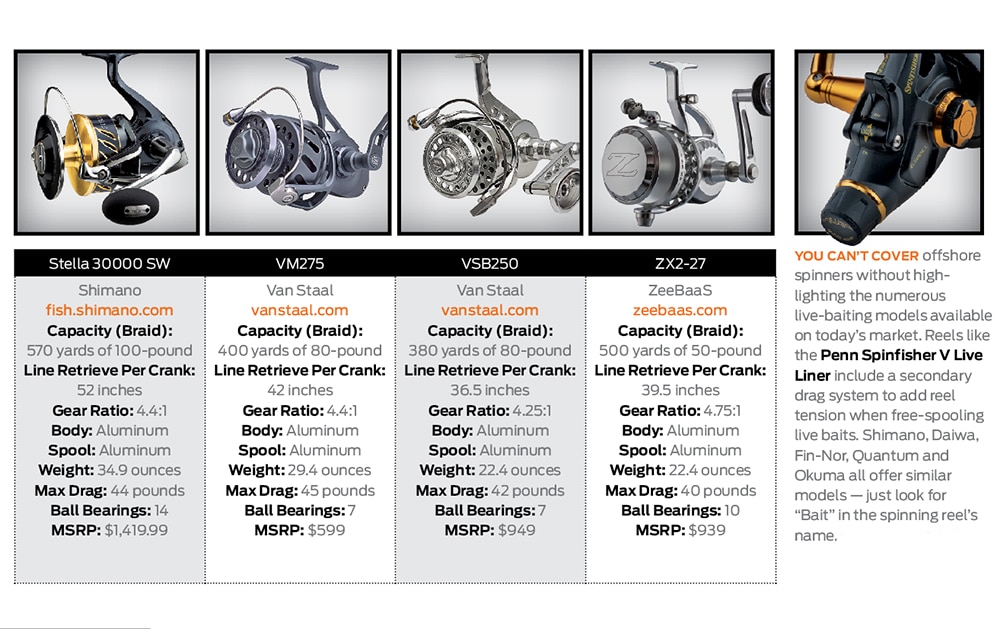
About the Build
Most quality offshore spinning-reel spools and housings are now machined from high-grade aluminum alloy. Though graphite is still used in some cases, it’s waning in favor of the tougher metal.
“The reason we use aluminum is it’s a very strong metal,” says Curt Arakawa, marketing manager at Daiwa. “Materials like graphite are not as strong as aluminum, and magnesium is more likely to corrode in salt water.”
Still, don’t be surprised if tackle companies favor something instead of aluminum in future spinners — reel companies continue to experiment with new materials.
Daiwa currently uses Zaion, a proprietary material made from high-density carbon resin, in some of its reel parts. “The Saltiga, Dogfight and Isla reels all have a Zaion carbon-composite air rotor to reduce weight,” says Arakawa. “It’s good for durability, but it’s probably not strong enough from which to build a frame.”
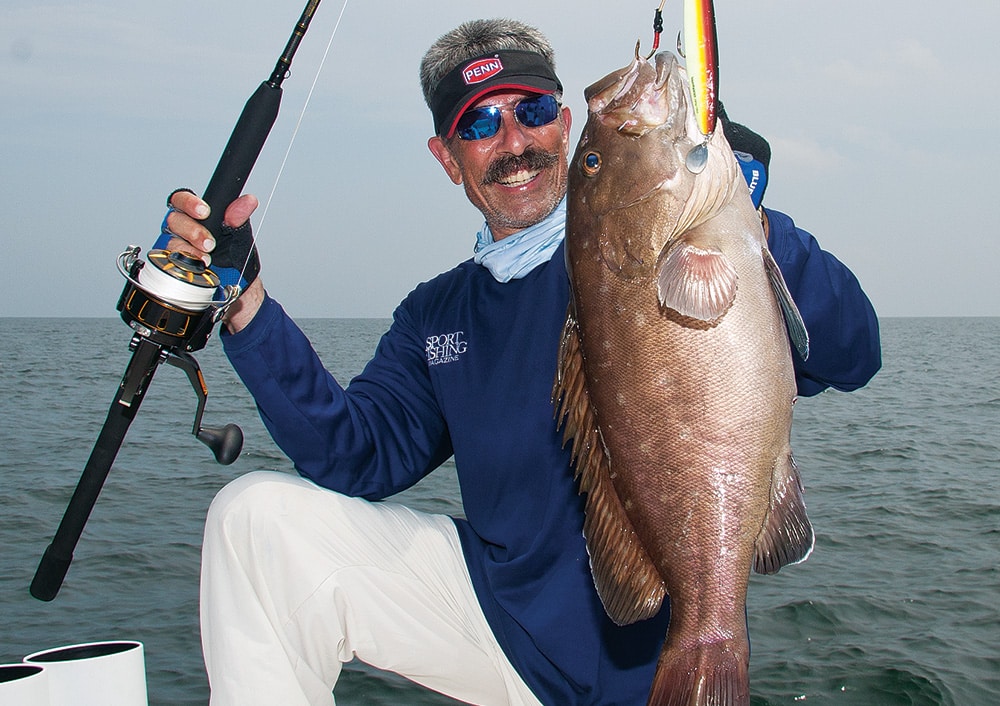
Get Your Bearings
Ever consider what that “+1” designation means when researching the number of ball bearings in a spinning reel? In general, the higher the number of ball bearings, the smoother the reel.
“The Penn Torque has seven ball bearings, so it has a 7+1 bearing system,” says Mike Rice, business manager at Penn Reels. “That ‘+1’ is a roller bearing.”
Roller bearings are under the rotor and keep it from spinning backward, says Rice. That’s why they’re sometimes called anti-reverse bearings.
One other feature, not to be confused with a roller bearing, is the line roller to which the bail arm is attached. Make sure your spinning reel has one — it helps prevent abrasion and twist when line enters or leaves your reel.
Geared Up
What’s the perfect gear ratio for your style of fishing? First off, let’s explain exactly what “gear ratio” means — it’s the number of times the bail rotates around the spool with a single handle turn.
For example, the Shimano Saragosa 25000 SW has a gear ratio of 4.4-to-1. That’s 4.4 rotations of the spool for every crank of the handle. The fewer the rotations per turn, the slower the speed of the reel, and fewer rotations of the bail mean that less line is added to your reel per turn of the handle.
“For bait applications, we go with a slower gear ratio to increase power within the reel, making it easier to turn under load,” says Robby Gant, part of Shimano reels’ product-development team. “For lure applications, we use a higher gear ratio.”
One might assume that a high-speed reel is the way to go. Heck, it gets your fish to the boat faster! But you walk a fine line when dealing with gear ratio and the amount of power your reel has, says Gant.
“You can have a fast reel with power, but the downside is durability,” says Gant. “You then drop the speed and gain durability.” Gant says that as a gear company, Shimano understands the mix of speed, power and durability.
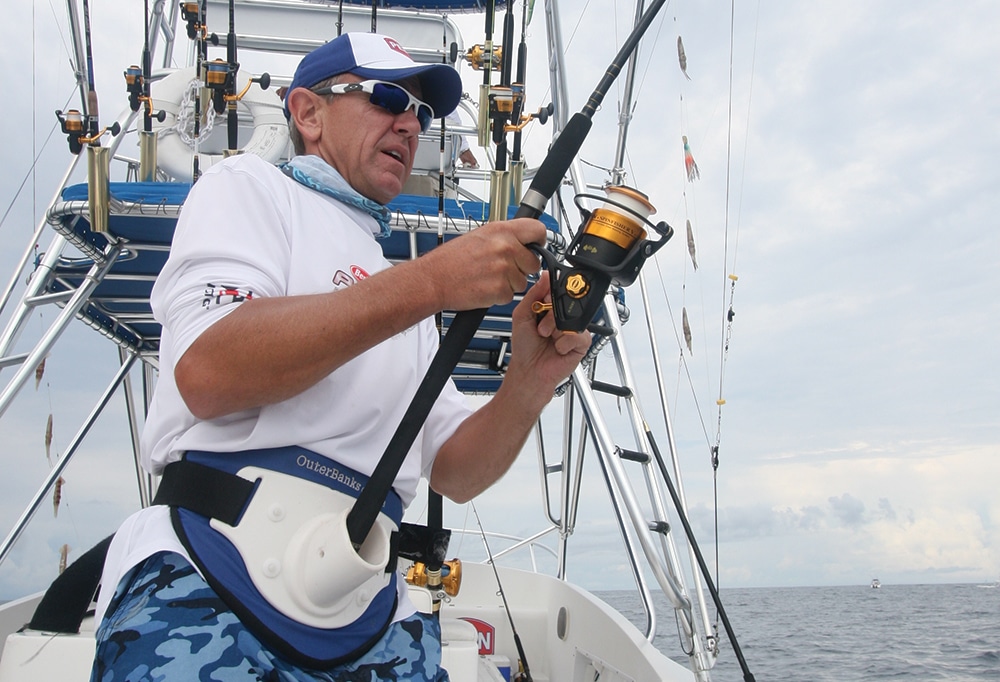
A Reel Drag
Offshore spinning reels must have smooth and powerful drags to handle the speed and strength of today’s offshore quarry. Fortunately, most oversize spinning reels are pushing 40 to 55 pounds of drag. With any fish pulling more than 30 pounds of pressure, you’ll likely have to grasp your rod with a death grip.
The Shimano Stella 20000 SW has a maximum drag of 55.1 pounds. Does that mean the reel can lift a 55-pound weight from the ground?
“In theory, yes,” says Gant. “We measure drag with the line [directly from] the reel, attach it to a scale, and pull. So if the reel can pull 55 pounds, then it should hold a 55-pound weight.”
Gant says “in theory” because other factors affect drag. “I haven’t tried [that kind of test], but it sounds fun,” he quipped.
Understand that variables such as the line flowing against rod guides add drag. Lifting a fish up through the water column and lifting a heavy weight on land are completely different animals — water displacement and buoyancy help anglers bring fish to the boat.
So even if you can lift 50 pounds off the ground, it doesn’t mean you should treat your offshore setup like a crane.
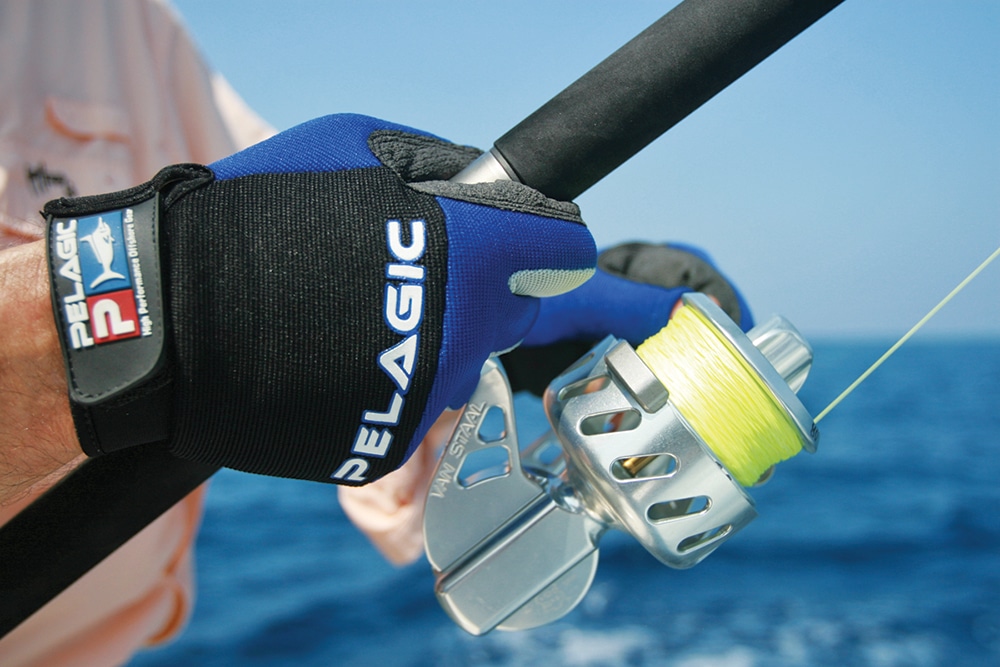
Bail on Your Bails?
Spinners without bails — like those from Van Staal or ZeeBaaS — might seem intimidating, or even awkward at first. From the day you start fishing, you’re taught how to flip the bail open before casting.
But Chris Littau, director of marketing at Zebco, explains that there are several advantages to bailless reels. While not necessary for every fishing scenario, bailless reels are worth a look. The simple design is durable and less likely to fail, and there’s no wire to bend or springs to break.
“Once you learn how to use it, it is actually easier than fumbling with a bail,” says Littau. “This is great when fishing in the dark or in the surf.”
So it’s not surprising that bailless reels are popular with surf fishermen in the Northeast who target striped bass and bluefish — especially anglers who cast heavy metals or plugs.
“There’s no possibility of a premature ‘trip,’” says Littau. “That’s when a bail slams closed while casting.” Plenty of expensive lures are lost that way each year.
Live-Baiting Success
For anglers who live-bait fish extensively, numerous manufacturers now produce reels capable of live-lining. Called by a number of different names, the technique allows a hooked baitfish to swim away from the boat with the reel in free-spool.
Once a fish takes the bait, turning the handle engages the reel; the angler never has to open or close the bail, except for casting. You’ll never have to use that homemade copper wire “hook” trick again! Spinning reels with this feature usually incorporate a dual drag system — one to add tension during free-spool and a standard drag to fight fish.
Popular spinners with this feature include the Penn Spinfisher V Live Liner, Shimano Baitrunner OC, Daiwa Opus Plus Bite N’ Run, Fin-Nor Sportfisher Bait Teaser, Quantum Cabo PTs Bait Teaser and Okuma Cedros Baitfeeder.

